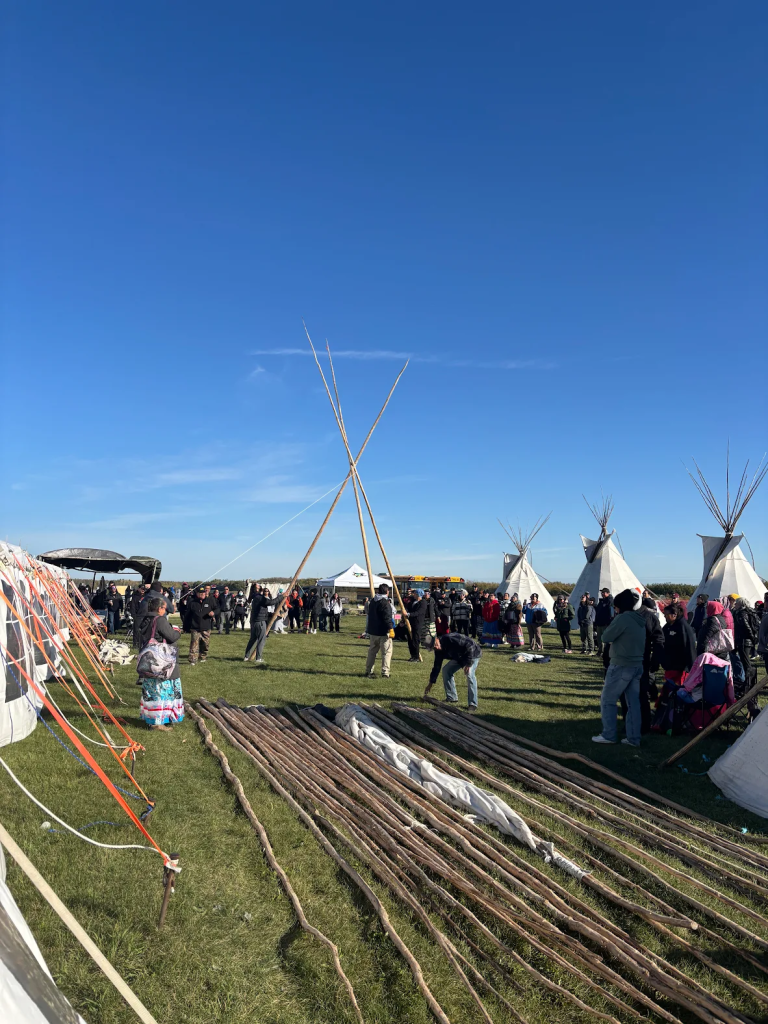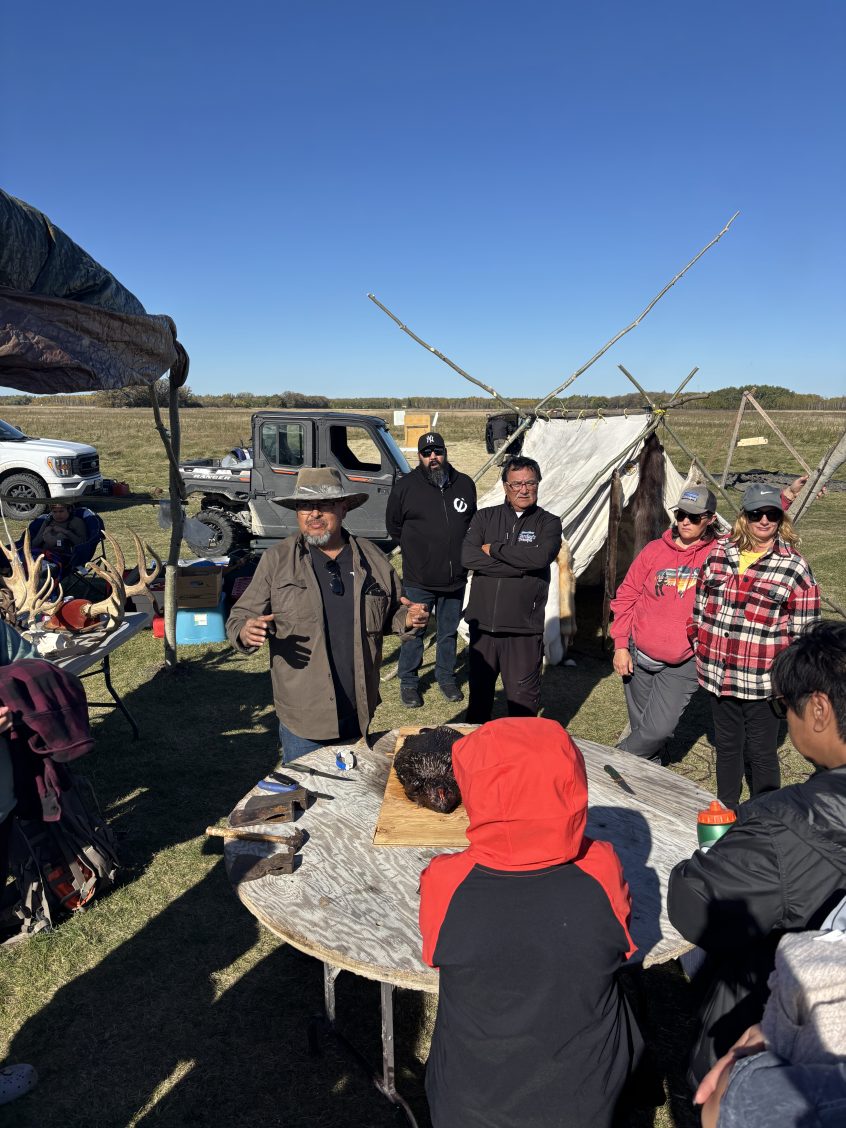Reflections on Peguis First Nation’s Annual Land-Based Gathering
By CPAWS Manitoba team, project partners
As guest participants, CPAWS Manitoba was honoured to be invited to the Peguis Land-Based Gathering. Although we were only able to attend for two of the three days, the experience left a lasting impression. The sense of community, shared learning, and deep respect for the land was truly inspiring. We look forward to future opportunities to join and support this important work that celebrates the spirit and intent of land-based education.
Over 700 people joined in St. Andrews to celebrate “Using Our Land is Protecting Our Land”, The Spirit and Intent of Land Based Education, in Peguis First Nation.

Gathering Together on the Land
In early October, Peguis First Nation proudly hosted its third annual Land-Based Gathering “Using Our Land is Protecting Our Land, The Spirit and Intent of Land Based Education.” We were honoured to be invited along with 700 registered participants, including approximately 400 students, professional development leaders, Peguis community members, individuals from surrounding communities, and various external partners and supporters.
It was a joyful and meaningful experience to come together on the land once again. The history of Peguis’ deep-rooted connection to the land dates back to their original settlement near present-day East Selkirk, along the Red River and Netley Creek, prior to the community’s forced government relocation to its current location in the Interlake region near Fisher Bay.
Over the course of the three-day gathering, it was heartening to witness people reconnecting with the land, and each other. Workshops, teachings, and shared meals served as a reminder that our relationships run deep, to the land, our histories, and to one another.
Hands-on Learning and Cultural Teachings
Throughout the week, participants took part in a wide range of cultural activities and learning opportunities. Nine tipis were set up on the grounds, with three of them erected during the gathering itself to demonstrate the traditional methods of assembling and taking down these important structures. These hands-on teachings provided a meaningful way for participants to engage with and understand the cultural significance behind the tipi.
Each tipi hosts a different daily teaching camp throughout the week creating a welcoming space for knowledge sharing and cultural connection. These included clan systems, roles and responsibilities of young men/women, teaching of song and the drum, spirit of the land, and ogichida (warrior/veteran) teachings.
In addition, several land-based activity camps were held, including Niska (goose) camp, fish camp, big game camp, trap/fur camp, medicine, and more.These camps provided valuable traditional knowledge, such as how to call in different animal species, techniques for filleting fish and skinning game, and ways to respectfully use every part of the animal.
Freshly made with toppings like wildberry jam and butter, a highlight for many attendees was roasting bannock over an open fire. The bannock was a delicious treat that added to the sense of community. Another fun and engaging activity was the fire-building competition, which brought out everyone’s creativity and teamwork.

Why We Gather
Gathering on the land is more than just a return to nature – it is a vital act of cultural preservation, education, and healing. When we gather together in these places, we not only strengthen our connection to the land, but reaffirm our roles and responsibilities to protect it.
The lands hold the knowledge that cannot be taught in a classroom. Opportunities for students, and learners alike, to be enriched through these hands-on experiences and teachings from Elders and Knowledge Keepers ensures that traditional practices, and ways of life centered on environmental stewardship are perpetuated. By engaging with the land and each other in respectful, sustainable ways, we not only help support these traditional ways of life but contribute to conservation, as the Nations have always been doing.
Chi Miigwech:
We wanted to share a sincere thank you to Mike Sutherland, Knowledge Keeper Wayne Manningway and everyone who worked to bring this gathering together. It was truly an honour to be invited to join these days.
A big thank you goes to Dallas King, a Māori Water Keeper guest speaker from across the pond (New Zealand), who joined the three day gathering to speak of the importance of water and share some important information of how her tribe is fighting to protect their lands, waters and traditional ways of life in their territories. It is a good reminder that people all over the world recognize the importance of standing together to ensure the lands, waters, teachings and ways of life are acknowledged and protected for our future generations.
Chi Miigwech, and thank you to Peguis First Nation, and all who helped put together this incredible event. It is through gatherings like this that we not only celebrate and connect, but strengthen the path forward for future generations.
We sincerely look forward to the next gathering.

How to Learn More:
Who is CPAWS Manitoba?
The Manitoba Chapter of the Canadian Parks and Wilderness Society (CPAWS Manitoba) is a not-for-profit organization dedicated to protecting Manitoba’s lands and waters for future generations. Founded in 1991, we are proudly built in Manitoba and committed to making sure the voice of conservation is heard on issues that affect our parks, wild spaces, and natural heritage.
As a proud partner, CPAWS Manitoba is supporting Peguis First Nation, Fisher River Cree Nation, and Kinonjeoshtegon First Nation in their vision to protect lands in the southeastern Interlake region. Together, we are helping ensure that nature, culture, and community remain intertwined for generations to come. Learn more about CPAWS Manitoba as it relates to this initiative at https://cpawsmb.org/campaigns/conservation-areas-initiative

